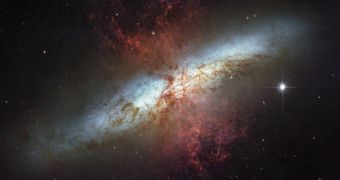Almost everyone who is interested in space has heard about black holes, the mysterious structures in the Universe, which have the power to make massive galaxies spin around them. Up until now, these formations have been divided in only two classes – small or supermassive – although the existence of a third connecting stage has long been hypothesized. Thanks to a team of French researchers, astronomers can now tell for sure that medium-sized black holes exist, a find that may help shed some light on how their supermassive cousins are formed.
Throughout the Universe, small black holes, with masses three to 20 times that of the Sun, are believed to have formed from the collapse of massive stars, which left behind such a massive gravitational field, that it was able to attract incoming matter and even light rays. But the supermassive variety, of which the one at the center of the Milky Way is part, has masses of millions to billions that of the Sun, and no intermediary steps have been detected until now.
As far as theory goes, large black holes are formed from many small ones coming together and joining their magnetic fields. With time, they trap even more matter in their area of gravity, and a galaxy begins to form and generate stars. But this theory has been unfounded and unprovable until the new research, because no intermediary state of aggregation was identified. The new black hole, located at the edge of the ESO 243-49 galaxy, is located some 240 million light-years away, and weighs in at an estimated 500 times the mass of our Sun.
According to astronomers at the Centre d’Etude Spatiale des Rayonnements, in France, who used the European Space Agency’s (ESA) XMM-Newton X-ray space telescope for their investigations, the peculiar structure emits X-ray radiations that are about 260 million times brighter than those of the Sun. Not knowing what it is at first, its finders named the formation “Hyper-Luminous X-ray Source 1.” Upon closer analysis of its behavior, emission patterns and physical traits, they concluded it couldn't be anything else than a black hole, Wired informs.

 14 DAY TRIAL //
14 DAY TRIAL //